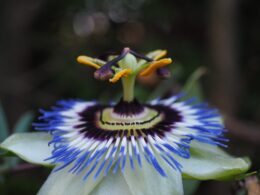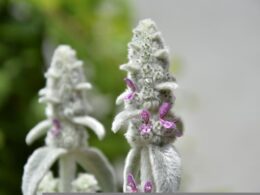In this guide, we’ll discuss everything you need to know about growing wishbone flowers in your own garden. From planting tips to care instructions, we’ll cover it all! So, if you’re looking for a beautiful flowering plant that’s easy to grow, look no further than the wishbone flower.
Wishbone Flower. General Information
Wishbone flower (Torenia Fournieri) is a charming little plant that is perfect for adding a splash of color to any garden. The flowers are small and tubular, with a stamen inside. They come in a variety of colors including blue, purple, pink, and white. This plant is native to tropical Asia, and it thrives in warm, humid climates. Wishbone flower is a member of the Linderniaceae family, genus Torenia.
It is typically cultivated as a garden annual, reaching around 12 inches tall. The small, ovate leaves are arranged in pairs along the stems. The flowers have five petals fused together at the base, and they bloom from summer to fall.
The wishbone flower is named for its distinctive flower shape. The lower part of the flower resembles a wishbone, while the upper part resembles a small trumpet. This plant is also sometimes called bluewings, since the flowers often have blue or purple markings on their petals.
Wishbone Flower: Planting, Soil & Sunlight Needs
Wishbone flower (Torenia fournieri) is a beautiful annual plant that grows well in most soil types. It prefers full sun, but will tolerate partial shade. The plant can reach up to 15 inches tall and produces small, blue or purple flowers. Wishbone flower is an excellent choice for borders, containers, mass plantings, and hanging baskets.
When planting wishbone flower, be sure to space the plants at least 12 inches apart. The plant prefers moist soil, but will tolerate some drought. Once established, wishbone flower is fairly low maintenance and does not require much fertilizer.
Wishbone Flower: Watering, Fertilizing, Pruning
Wishbone flower is a beautiful annual that blooms all summer long. It’s easy to care for, and with a little attention, will thrive in your garden. Here are some tips on watering, fertilizing and pruning your wishbone flower:
- Watering: keep the soil moist, but not soggy. Water regularly, especially during dry periods.
- Fertilizing: fertilize monthly with a balanced fertilizer.
- Pruning: deadhead spent flowers to encourage new growth. Cut back the plant if it becomes leggy or floppy.
- Frost: wishbone flower is not frost-tolerant. If frost is forecast, cover the plant or bring it indoors.
Wishbone Flower: Propagation
The wishbone flower is a popular plant for propagation because it is easy to grow from stem cuttings. To propagate, take a 6-8 inches cutting from a healthy stem and remove the leaves from the bottom half of the cutting. Dip the cutting in rooting hormone and plant in moistened perlite or sand. Cover the pot with plastic to create a humid environment and place in a bright, indirect light location. Keep the soil moist but not wet and in 4-6 weeks, roots should form, and new growth will appear. Once the plant is established, you can transplant it to a pot with regular potting soil.
Growing Wishbone Flowers From Seeds
Sow your wishbone flowers seeds in the springtime, when the weather is warm and the days are longer. You’ll need to prepare a seedbed for them, which should be well-drained and in full sun. Sow the seeds thinly, covering them with a layer of fine soil or sand. Keep the seedbed moist until the seeds have germinated, which usually takes 10-14 days. Once they’ve sprouted, thin out the seedlings so that they’re spaced about 12 inches apart.
When to Plant Wishbone Flowers
While the planting of wishbone flowers is typically associated with good luck, the best time to plant these beautiful blooms may actually be determined by your location. In general, those who live in cooler climates should wait until late spring or early summer to plant wishbone flowers, while those in warmer climates can get away with planting them in late winter or early spring, before the last frost.
Wishbone flowers are annuals, meaning they will only last one growing season. Because of this, it’s important to plant them at a time when they will have the best chance of blooming. If you plant them too early, they may bloom before the weather is warm enough and then die off.
Torenia Plants: Pests and Diseases
Torenia plants are generally resistant to most pests and diseases, but there are a few that can be problematic. One of the most common is root rot, which can be caused by too much water or poor drainage. If your plant starts to wilt, has yellow leaves, or the stems start to rot, it may have root rot and should be removed from the soil immediately.
Other common problems include powdery mildew, leaf spot, and stem rot. These can usually be treated with fungicides, but if they become severe, you may need to remove the affected plant parts. Aphids, spider mites, and white flies can also infest a wishbone flower, but these can usually be controlled with insecticidal soap or other pesticides.



















